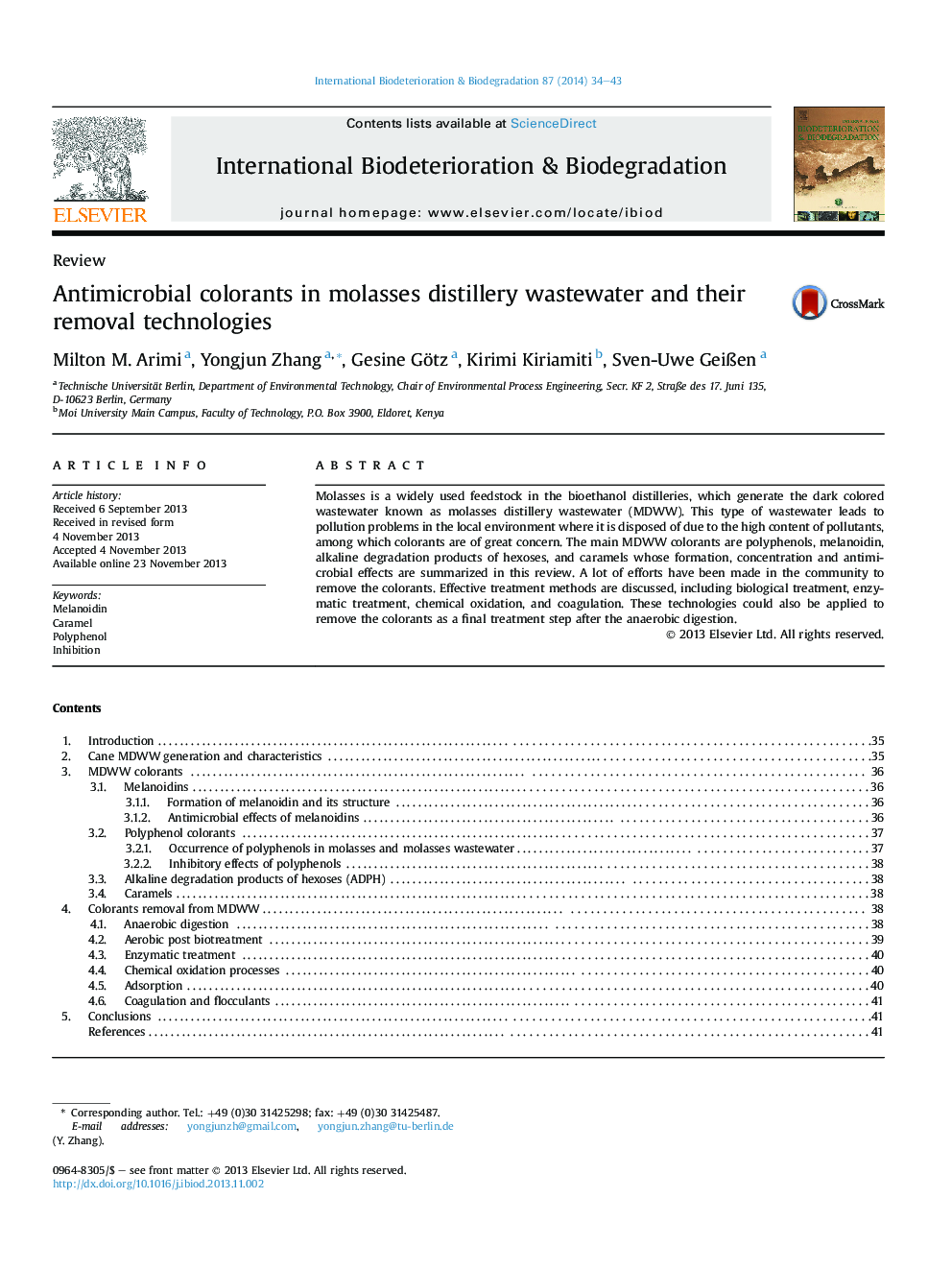| Article ID | Journal | Published Year | Pages | File Type |
|---|---|---|---|---|
| 4364994 | International Biodeterioration & Biodegradation | 2014 | 10 Pages |
•Colorants include caramels, melanoidins and alkaline degradation products of hexoses (ADPH).•The main antimicrobial effect comes from melanoidins while polyphenols and ADPH partly contribute to the effect.•An applicable treatment process may involve an anaerobic digestion followed by a color removal step.•Further studies are in need to selectively remove antimicrobial sources before the anaerobic digestion.
Molasses is a widely used feedstock in the bioethanol distilleries, which generate the dark colored wastewater known as molasses distillery wastewater (MDWW). This type of wastewater leads to pollution problems in the local environment where it is disposed of due to the high content of pollutants, among which colorants are of great concern. The main MDWW colorants are polyphenols, melanoidin, alkaline degradation products of hexoses, and caramels whose formation, concentration and antimicrobial effects are summarized in this review. A lot of efforts have been made in the community to remove the colorants. Effective treatment methods are discussed, including biological treatment, enzymatic treatment, chemical oxidation, and coagulation. These technologies could also be applied to remove the colorants as a final treatment step after the anaerobic digestion.
